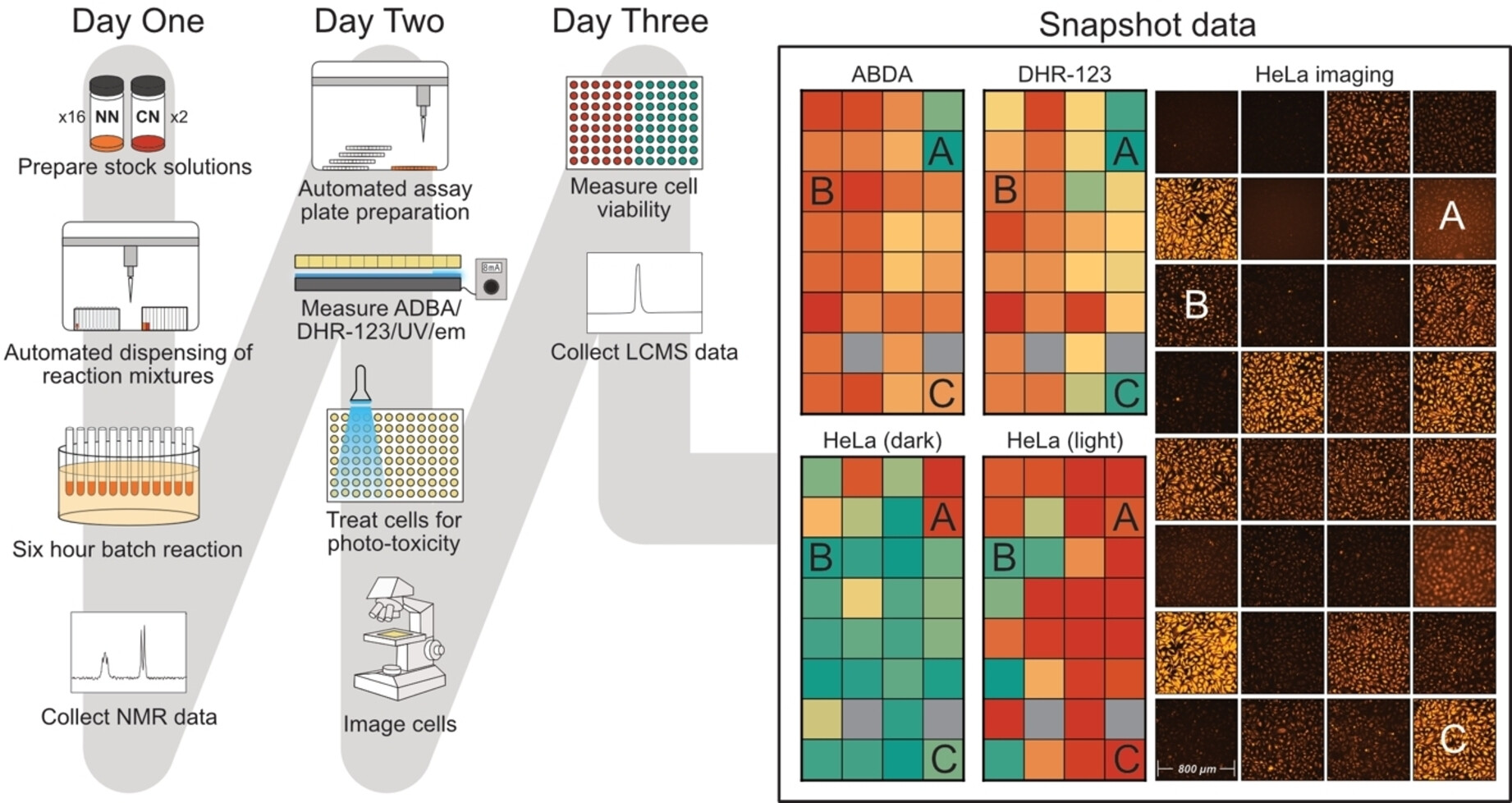News
Expanse Supercomputer Sims Advance Promising Alternative to Chemotherapy
Published August 14, 2024
Laiyina Shate and Kimberly Mann Bruch, SDSC Communications

Three-day workflow, resulting in a snapshot of the ability of the iridium complexes to generate cancer-killing reactive oxygen species (through ABDA and DHR-123 assays), their toxicity in the dark and in the light, and their cellular imaging of HeLa cells. A large difference in light versus dark toxicity is useful because it allows for controlled treatment, only when light is applied. Potential lead complexes are highlighted with the letters A, B, and C, based on their cell-killing and cell-staining ability. Credit: Imperial College
Cancer treatments such as chemotherapy often inflict harm on healthy cells alongside cancerous ones. Hence scientists persistently research the potential of noninvasive treatments like photodynamic therapy (PDT), which combines light and chemicals. An international research team from the Massachusetts Institute of Technology (MIT) in Cambridge, Massachusetts and the Imperial College in London, England has just published a study that could significantly advance PDT. The scientists used Expanse at the San Diego Supercomputer Center at UC San Diego to run first-principles simulations of a series of iridium-centered chemicals potentially usable for both PDT and the bioimaging of cells. Their findings have been published in Angewandte Chemie.
MIT Chemical Engineering Professor Heather J. Kulik, who has been using U.S. National Science Foundation ACCESS allocations on Expanse for several years on an array of studies, worked with Gianmarco Terrones, an MIT chemical engineering graduate student researcher, to calculate properties of specific chemicals, namely the energies of their excited states and the energies of their orbitals.
“In PDT, a chemical agent is introduced to a patient, and is activated upon light exposure for disease treatment,” Terrones explained. “After a library of chemicals was synthesized by our collaborators at Imperial College, they tested them for toxicity to cancer cells before and after irradiation with light. We then studied the chemicals computationally to help rationalize their results.”
The scientists found some iridium-centered chemicals that are especially promising for noninvasive cancer treatments like PDT and bioimaging of cells.
“When the iridium-centered chemicals were illuminated with light, they reached a higher energy state which can produce reactive oxygen species, which in turn put oxidative stress on cells and lead to cell death,” Terrones said. “Just like sunlight can energize a person on a cold day, visible light can energize metal-centered chemicals and just like an energetic person can lift the spirits of another person, an excited iridium complex can boost the energy of another chemical like oxygen.”
With this knowledge, the MIT team ran computer simulations on Expanse to determine why certain iridium complexes have better performance than others. This specific aspect of their work only took three days with the use of Expanse’s processors, which can run at a speed of five petaflops per second.
“Using our ACCESS allocations on Expanse, we quickly found that the properties of each of the iridium-centered chemicals could be better understood in the context of the experiment,” Kulik said. “We specifically ran density functional theory and time-dependent density functional theory calculations of 90 different iridium complexes that had been synthesized by our colleagues in the Vilar Lab.”
Kulik and Terrones are now working with Professor Ramon Vilar and his team at Imperial College to continue this work by developing an active learning workflow with greater integration of experiment and computation, such that computational results inform the next iridium complexes that are synthesized and tested. With that additional data, the scientists aim to improve the performance of data-driven machine learning models and to also serve as a guide for the overall supercomputing community.
The computational work on Expanse was funded by ACCESS (allocation number CHE140073).

